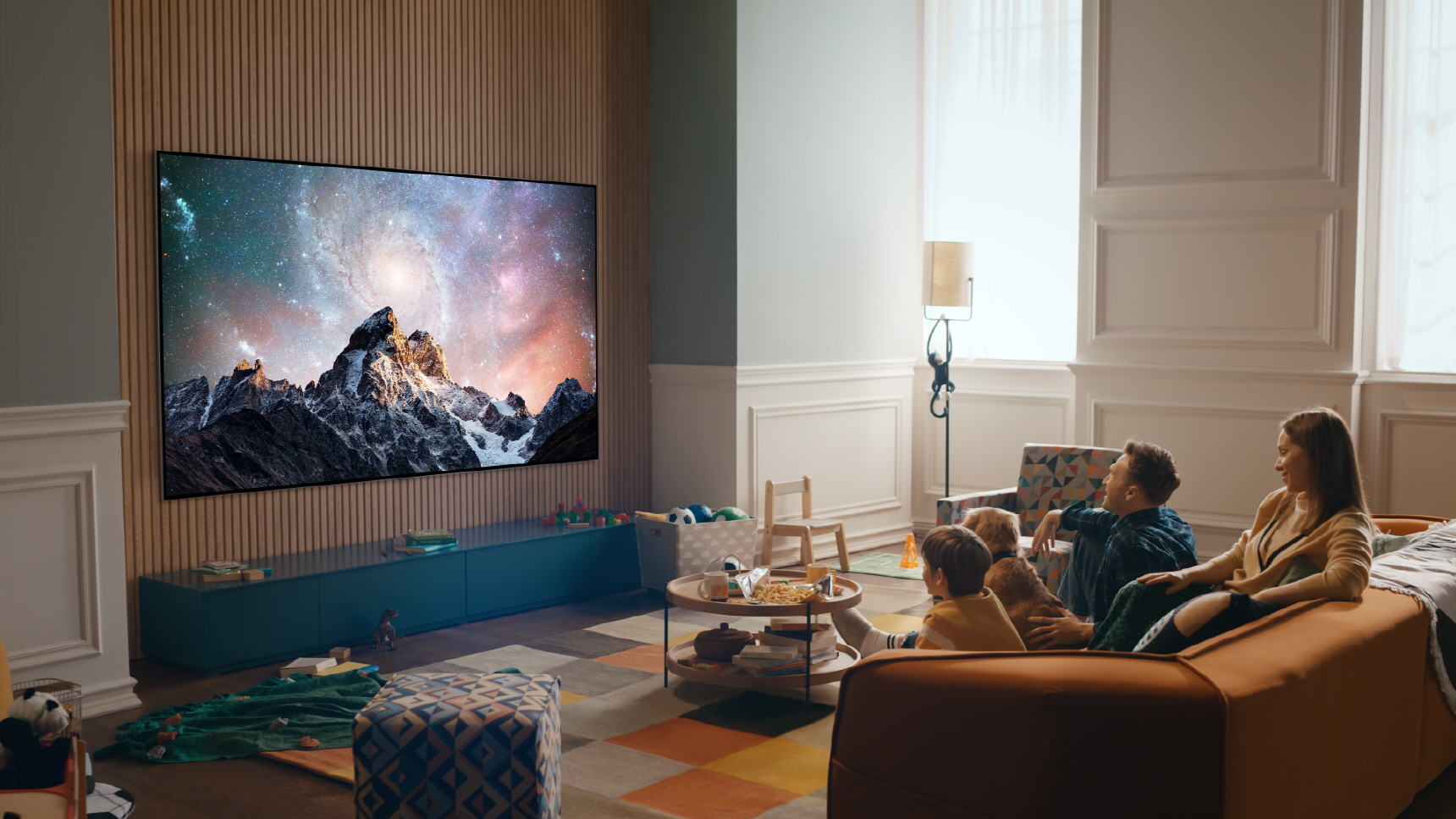LG has apparently found a way to boost OLED brightness by another 20%, up to 1200 nits
But will the new micro lens outperform Samsung's QD-OLED panels?

LG Display may have found a way to boost the brightness of OLED TVs by another 20 per cent, according to a report by Korean outlet The Elec (via flatpanelshd).
By applying a micro lens – a thin transparent layer containing thousands of tiny lenses – to an existing OLED panel, LG Displays reckons it can optimise each and every light path, increasing brightness to around 1200 nits.
The tech simultaneously reduces power consumption, which is good news because consuming too much power has been known to shorten a display's lifespan.
"LG Display is known to expect a 20% improvement in OLED luminance by applying a micro lens. Under the premise that the product lifespan is the same, if the OLED luminance increases, power consumption can be saved at the same luminance," reads a translated version of the report.
The project is said to have reached an "advanced" stage, which supposedly means that micro lens panels could be introduced at the start of 2023. The tech is expected to appear on LG's top-of-the-range 'OLED.EX' panels initially, boosting brightness from 1000 nits to 1200 nits .
The idea of using a micro lens layer to boost a screen's performance is nothing new. It's rumoured that the Samsung Galaxy S21 Ultra AMOLED display uses a similar trick, while Chinese electronics manufacturer Seeya is said to be working on an ultra-portable OLED display featuring a micro lens.
It's also worth noting that micro lenses won't necessarily help LG Display catch up with QD-OLED, the cutting-edge panel tech developed by Samsung Display. The newly launched Samsung S95B QD-OLED TV can apparently already reach 1500 nits.
Get the What Hi-Fi? Newsletter
The latest hi-fi, home cinema and tech news, reviews, buying advice and deals, direct to your inbox.
MORE
Read our review of LG's OLED65G2 2022: LG's finest OLED yet
QD-OLED TV: everything you need to know about the game-changing new TV tech
Tom is a journalist, copywriter and content designer based in the UK. He has written articles for T3, ShortList, The Sun, The Mail on Sunday, The Daily Telegraph, Elle Deco, The Sunday Times, Men's Health, Mr Porter, Oracle and many more (including What Hi-Fi?). His specialities include mobile technology, electric vehicles and video streaming.
-
Friesiansam Is pushing up the brightness, going to increase the rate at which the organic component of OLED deteriorates?Reply -
Steel22 Reply
Yes it will thay all ready have a poor profromance and the fact they suffer screen retention there bad for gaming there being marketed to gamers but u rely shouldn't get one for that get a QLED OR SOMETHING OLED won't be woth it untill they find way to stop screen retention its worse than plasma tvsFriesiansam said:Is pushing up the brightness, going to increase the rate at which the organic component of OLED deteriorates? -
GSV Ethics Gradient Postulation presented as fact, I fear.Reply
Having owned plasma and OLED sets (neither of which suffered screen burn), the former was massively more prone to image retention. -
Hexenhammer ReplySteel22 said:Yes it will thay all ready have a poor profromance and the fact they suffer screen retention there bad for gaming there being marketed to gamers but u rely shouldn't get one for that get a QLED OR SOMETHING OLED won't be woth it untill they find way to stop screen retention its worse than plasma tvs
Everything you said is just wrong -
Hexenhammer Reply12th Monkey said:Postulation presented as fact, I fear.
Having owned plasma and OLED sets (neither of which suffered screen burn), the former was massively more prone to image retention.
There are Hardcore OLED haters that invent crazy horror stories.
Im an OLED user since 2016, i would NEVER go back to LCD, not a chance.
And I been using 55inchg OLED TVs as My PC monitor, not a living room TV buy doing the thing these people are scared the most of.
My 2016 C6 was given to my parents as living room TV in 2019 when i got C9.
Yes it has Bunr-In, its first 4K OLED, Curved and the last model with 3D But the Burn-In is only visible if you run a test pattern, so in my view if i cant see it during normal use it doesnt exist
